No products in the cart.

1. Introduction
Artificial Intelligence (AI) is transforming the agricultural industry by introducing smart farming technologies that enhance efficiency and productivity. From AI-powered crop monitoring to automated livestock monitoring, AI is helping farmers make data-driven decisions that improve yields while reducing costs. Traditional farming methods relied on manual labor and intuition, but today, AI in agriculture enables precision and automation, leading to more sustainable and profitable operations.
One of the biggest advantages of artificial intelligence in farming is its ability to analyze vast amounts of data collected from IoT in agriculture, sensors, and satellite imagery. This allows farmers to predict crop health, detect pests, and optimize resource usage. Predictive analytics in farming helps in identifying patterns and forecasting yields, ensuring better planning and reduced waste. With AI-driven insights, farmers can take preventive actions rather than reacting to problems after they occur.
Moreover, agricultural automation powered by machine learning in farming is revolutionizing traditional practices by introducing autonomous farming equipment like self-driving tractors and robotic harvesters. These innovations reduce labor dependency while improving efficiency. As AI continues to evolve, its role in digital agriculture solutions will expand, making farming more climate-smart and sustainable. The integration of AI not only modernizes agriculture but also ensures food security for a growing global population.
2. The Role of AI in Modern Farming
AI is playing a crucial role in modern farming by enabling AI-powered decision-making for farmers. With the help of data-driven farming, AI analyzes real-time data from sensors, drones, and satellites to provide actionable insights. Farmers can make informed choices about irrigation, fertilization, and pest control, leading to improved yields and reduced costs. By utilizing predictive analytics in farming, AI helps anticipate weather patterns, soil conditions, and potential disease outbreaks, allowing for timely interventions and better resource management.
AI automation is enhancing efficiency and productivity across various farming operations. Agricultural automation technologies, such as autonomous farming equipment and robotic systems, are replacing manual labor, reducing human error, and speeding up tasks like planting, harvesting, and sorting crops. AI-driven irrigation systems optimize water usage by monitoring soil moisture levels and adjusting water flow accordingly, promoting sustainable farming practices while minimizing waste. These advancements not only improve efficiency but also help in conserving essential resources.
Furthermore, AI applications in agriculture extend to livestock management, where AI-powered farm management tools track animal health, monitor feeding patterns, and detect diseases early. Automated livestock monitoring ensures better care for animals while reducing operational costs.

3. Key AI Technologies Driving Agricultural Transformation
AI is revolutionizing agriculture through advanced technologies like machine learning and predictive analytics, which help farmers make accurate, data-driven decisions. These AI models analyze historical and real-time farm data to predict crop yields, detect diseases, and optimize planting schedules. By leveraging predictive analytics in farming, farmers can anticipate weather patterns, soil conditions, and pest infestations, allowing them to take proactive measures. This not only enhances productivity but also supports sustainable farming practices by reducing excessive use of fertilizers and pesticides.
Another game-changing AI technology is the Internet of Things (IoT) and smart sensors in agriculture, which provide real-time monitoring of farm conditions. These smart sensors track soil moisture, nutrient levels, and environmental conditions, enabling AI-powered crop monitoring and precision irrigation. AI-driven irrigation systems adjust water distribution based on soil needs, preventing overuse and ensuring efficient water management. This integration of AI with IoT enhances data-driven farming, allowing for resource optimization and increased farm efficiency.
The use of AI applications in agriculture extends beyond crops to livestock management as well. Automated livestock monitoring systems utilize IoT-enabled sensors and cameras to track animal health, detect diseases early, and optimize feeding schedules. These technologies not only reduce manual labor but also improve farm profitability. As AI continues to evolve, its role in agri-tech innovations will expand, making farming more precise, efficient, and environmentally friendly.
4. Precision Agriculture with AI
AI is transforming precision agriculture by optimizing the use of critical resources such as water, fertilizers, and pesticides. Through AI-powered crop monitoring, smart algorithms analyze data from drones, satellites, and soil sensors to determine the exact amount of inputs needed for each part of a field. This data-driven farming approach ensures that crops receive the right nutrients at the right time, reducing waste and lowering production costs. AI-driven irrigation systems help manage water distribution efficiently, preventing overuse and promoting sustainable farming practices.
Another major advancement is AI-driven crop monitoring and yield prediction, which allows farmers to maximize productivity. By utilizing machine learning in farming, AI systems analyze weather patterns, soil health, and plant growth stages to predict potential yields accurately. These insights help farmers plan their harvest schedules, optimize storage, and reduce post-harvest losses. Additionally, AI models can detect diseases and pest infestations early, enabling farmers to take timely action and prevent large-scale crop damage.
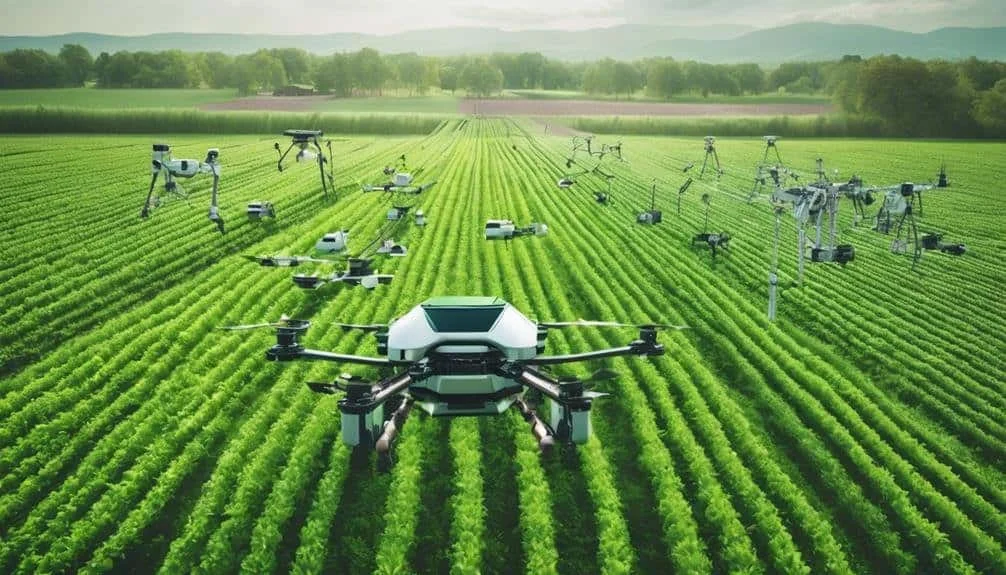
5. AI in Livestock and Dairy Farming
AI is playing a crucial role in transforming livestock and dairy farming by improving efficiency, productivity, and animal welfare. One of the most significant advancements is AI-powered animal health monitoring, which helps farmers detect diseases early and prevent potential outbreaks. Using AI applications in agriculture, smart cameras, IoT-enabled sensors, and wearable devices track vital signs such as temperature, movement, and feeding patterns in real time. By analyzing this data, AI algorithms can identify abnormal behaviors, allowing farmers to intervene before minor health issues escalate. This proactive approach not only enhances animal well-being but also reduces veterinary costs and boosts overall farm productivity.
Another major innovation is automated feeding, breeding, and dairy production, which optimizes farm operations. AI-driven feeding systems analyze an animal’s nutritional needs and adjust feed portions accordingly, ensuring optimal growth and milk production. Machine learning in farming helps improve breeding programs by predicting the best mating times based on genetic and health data, leading to healthier and more productive livestock. In dairy farms, AI-powered farm management automates milking schedules, monitors milk quality, and ensures hygiene standards are met. These systems help farmers increase output while reducing labor-intensive tasks.
The integration of AI and robotics in agriculture further enhances automation in livestock management. Robotic milking machines, automated calf feeders, and AI-assisted herd monitoring systems streamline farm operations, making them more efficient and cost-effective.
6. Sustainable Farming Practices Enabled by AI
Artificial intelligence is driving a significant shift toward sustainable farming practices, helping farmers reduce environmental impact while increasing efficiency. One of the key ways AI contributes to sustainability is through AI-driven solutions that optimize resource usage. Precision agriculture powered by AI enables farmers to apply water, fertilizers, and pesticides only where needed, reducing waste and minimizing pollution. AI-powered crop monitoring uses satellite imagery and smart sensors to detect plant health, allowing farmers to take targeted actions instead of broad applications of chemicals. This approach not only conserves resources but also enhances soil health and biodiversity.
AI also plays a crucial role in climate-smart and eco-friendly farming by helping farmers adapt to changing weather patterns. Predictive analytics in farming processes vast amounts of climate data to forecast droughts, floods, and temperature fluctuations. This enables farmers to make informed decisions about crop selection, planting schedules, and irrigation strategies, ensuring resilience against climate change. Machine learning in farming also helps develop climate-resilient crops that can withstand extreme conditions, further contributing to long-term sustainability.
Additionally, AI is being integrated into agricultural automation to minimize carbon footprints. Autonomous farming equipment such as electric-powered AI-driven tractors and drones reduces fuel consumption and emissions. AI-powered farm management systems optimize logistics, cutting down on unnecessary transportation and energy use. As AI technology continues to evolve, it will play an increasingly vital role in making agriculture more sustainable, ensuring food production remains efficient while protecting the environment.
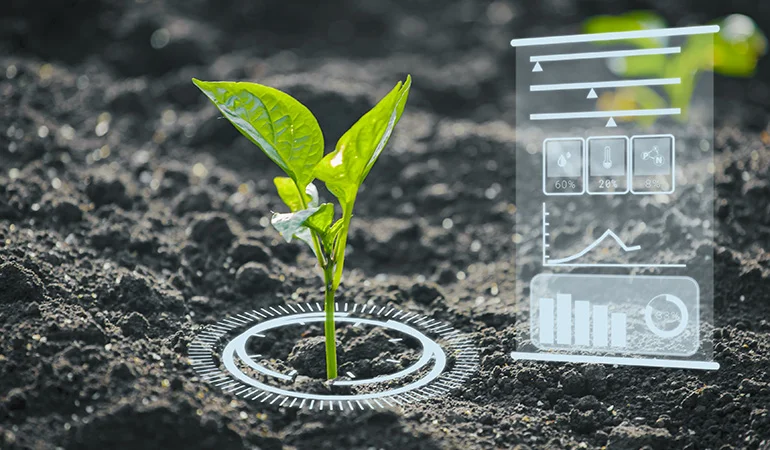
7. Autonomous Farming Equipment and Robotics
The integration of autonomous farming equipment and AI-powered farm machinery is transforming modern agriculture by enhancing efficiency and reducing labor dependency. Self-driving tractors equipped with AI and GPS technology can operate with minimal human intervention, optimizing plowing, planting, and harvesting processes. These tractors analyze field conditions in real time, adjusting speed and direction for maximum productivity. Additionally, robotic harvesters are revolutionizing fruit and vegetable farming by using computer vision and machine learning to identify ripe produce and harvest it with precision, minimizing waste.
Drones in agriculture have become essential for crop monitoring, irrigation, and pesticide application. AI-powered drones can scan vast fields, detect crop health issues, and provide actionable insights to farmers. By using high-resolution imaging and predictive analytics in farming, these drones help optimize water and fertilizer usage, ensuring sustainable farming practices. Autonomous irrigation systems, guided by AI, further contribute to resource-efficient agriculture by delivering precise amounts of water based on real-time soil moisture data.
8. Challenges and Limitations of AI in Farming
While AI in agriculture offers numerous benefits, it also presents challenges that impact its widespread adoption. One of the primary barriers is the high cost of AI-powered farm equipment. Advanced technologies such as autonomous farming equipment, smart sensors, and predictive analytics in farming require significant investment, making it difficult for small and medium-sized farmers to afford these solutions. Additionally, there is a steep learning curve associated with adopting AI applications in agriculture, as farmers need training to effectively use digital agriculture solutions and interpret AI-generated insights.
Beyond technical and financial obstacles, ethical concerns also play a role in AI adoption in farming. The increasing use of AI raises questions about data privacy, farmer dependency on big tech companies, and job displacement due to automation. While AI-driven agricultural automation improves efficiency, it also reduces the need for manual labor, potentially impacting rural employment. To ensure a sustainable future for AI in farming, it is essential to address these challenges by developing affordable AI solutions, improving digital infrastructure, and creating policies that balance innovation with ethical considerations.
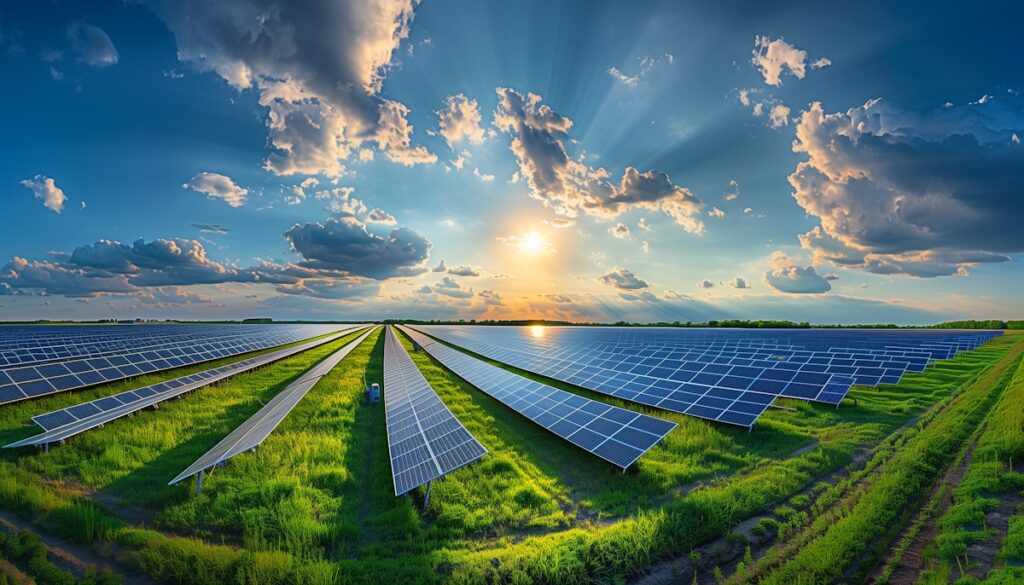
9. Future of AI in Agriculture
The future of AI in agriculture is promising, with emerging technologies set to transform farming into a more efficient, sustainable, and data-driven industry. One of the key trends is the advancement of machine learning in farming, which will enable AI systems to make even more precise predictions about crop health, soil conditions, and weather patterns. Additionally, AI-powered farm management software will continue to evolve, offering farmers real-time insights into their operations, helping them make data-driven farming decisions that optimize productivity and resource use.
Another major development is the increasing role of autonomous farming equipment. Future AI-powered drones, robotic harvesters, and self-driving tractors will further automate farming operations, reducing labor costs and improving efficiency. AI-driven irrigation systems will also become more advanced, ensuring precision agriculture by delivering the right amount of water and nutrients to crops, minimizing waste, and promoting sustainable farming practices. Additionally, IoT in agriculture will expand, with more connected devices and smart sensors collecting data to improve farm management and productivity.
As AI continues to evolve, it will play a vital role in shaping the future of global food production. The integration of AI applications in agriculture will help farmers combat the challenges of climate change, food security, and resource scarcity by providing innovative solutions for climate-smart agriculture. With continuous advancements in agri-tech innovations, AI has the potential to revolutionize the farming industry, making it more resilient, productive, and environmentally friendly in the years to come.
10. Conclusion
The integration of AI in agriculture has significantly transformed traditional farming practices, making them more efficient, sustainable, and data-driven. By leveraging artificial intelligence in farming, modern farmers can optimize resource usage, improve crop monitoring, and automate labor-intensive tasks. Technologies such as machine learning, predictive analytics, and IoT in agriculture have enhanced decision-making, increased productivity, and minimized environmental impact. From AI-powered crop monitoring to autonomous farming equipment, these innovations are reshaping the way food is produced worldwide.
Looking ahead, the future of AI applications in agriculture holds immense potential. Advancements in digital agriculture solutions and agri-tech innovations will continue to drive precision farming, helping farmers combat challenges such as climate change, food security, and resource scarcity. The adoption of AI-driven irrigation systems, automated livestock monitoring, and AI-powered farm management will further enhance productivity and sustainability.
FAQs:
Q1. How is AI transforming traditional farming practices?
Artificial intelligence (AI) is revolutionizing traditional agriculture by enabling precision farming, optimizing resource utilization, and automating labor-intensive tasks. AI-powered technologies, such as predictive analytics and smart sensors, assist farmers in making data-driven decisions, leading to increased efficiency and sustainability in farming operations.
Q2. What are the benefits of integrating AI into agriculture?
Integrating AI into agriculture offers numerous benefits, including improved crop yields, reduced resource wastage, enhanced decision-making, and the automation of repetitive tasks. These advancements contribute to sustainable farming practices and increased profitability for farmers.
Q3. What are some applications of AI in modern farming?
AI applications in modern farming encompass various areas such as automated weeding devices, drone-based precision farming, agricultural yield prediction analytics, soil monitoring, climate forecasting, and irrigation system optimization. These technologies collectively enhance overall farm management and productivity.
Q4. How does AI contribute to sustainable agriculture?
AI contributes to sustainable agriculture by enabling precision farming techniques that optimize the use of water, fertilizers, and pesticides. By analyzing data from satellites, drones, and sensors, AI helps farmers make informed decisions that maximize yield while minimizing waste and environmental impact.
Q5. What challenges do farmers face when adopting AI technologies?
Farmers may encounter challenges such as high initial investment costs, the need for technical expertise, data privacy concerns, and the integration of new technologies with existing farming practices when adopting AI technologies. Addressing these challenges is crucial for the widespread adoption of AI in agriculture.
Related Articles
Soil & Water Management
How AI Can Help Young Farmers Succeed in U.S. Agriculture
1. Introduction: Farming in the United States is at a crossroads. With...
Soil & Water Management
AI and Sustainable Farming: Can Technology Save the Planet?
1. Introduction: Can the very industry that feeds the world also be...
Soil & Water Management
AI for Seed Selection: Choosing the Right Crops for Maximum Yield
1. Introduction: Every successful harvest begins with one critical decision, choosing the...
Soil & Water Management
AI in Soil Health: How Smart Tech is Improving Crop Productivity
1. Introduction: Healthy soil is the foundation of a productive farm, but...
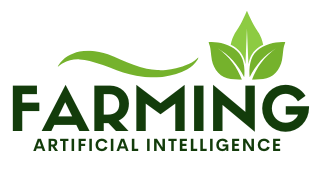

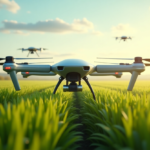
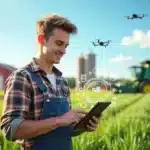

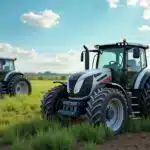

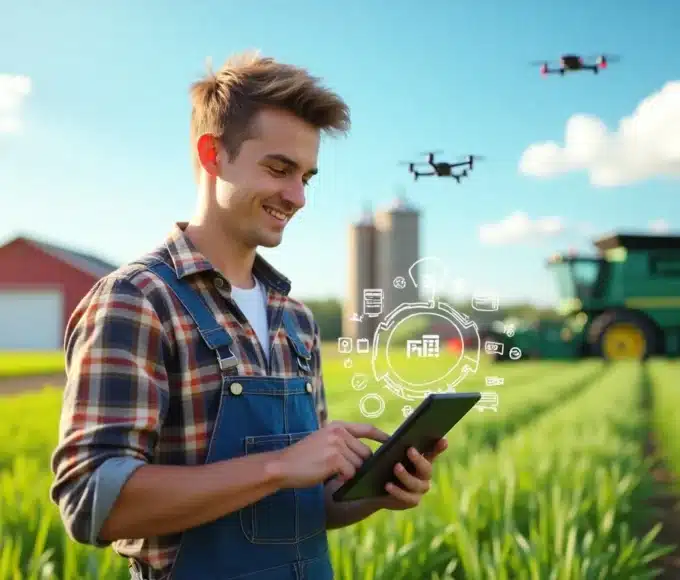
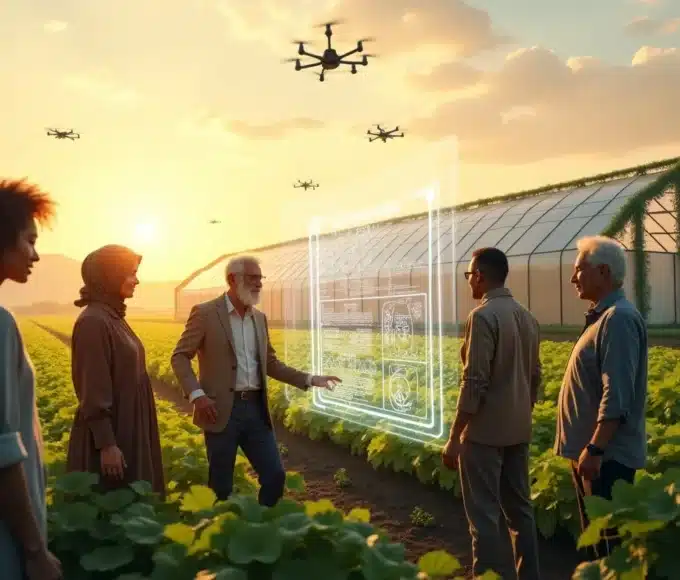
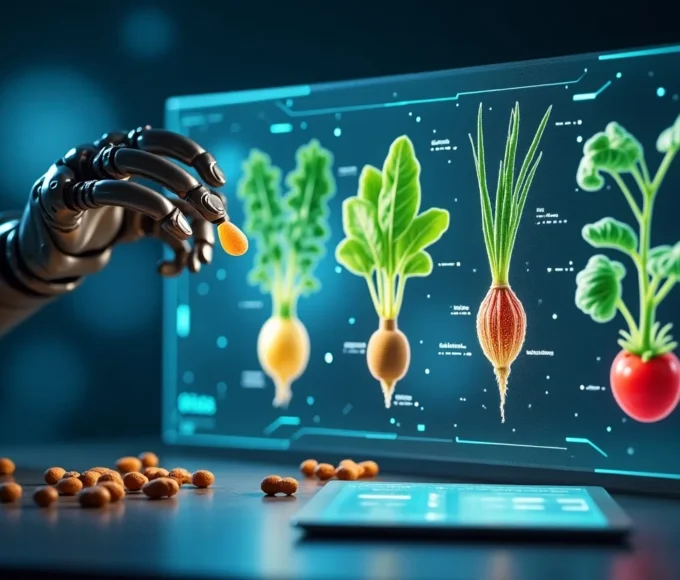
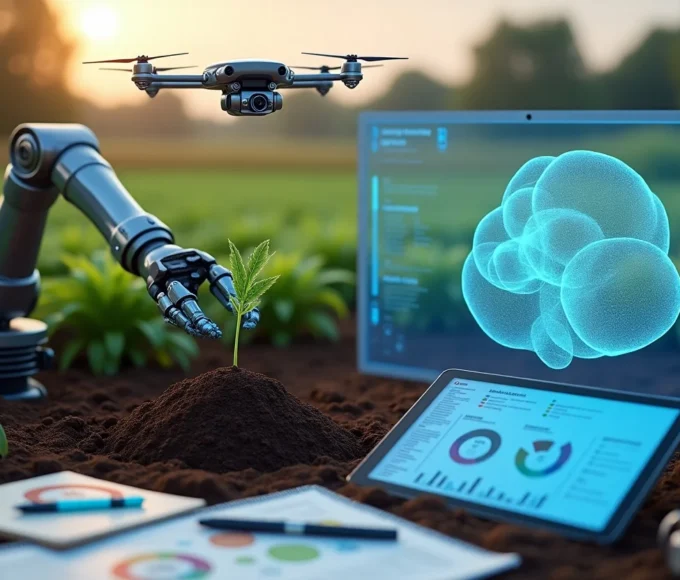
1 Comment